DID YOU KNOW?
Collar choices for pets are endless. They are the perfect place to hang identification and, with a variety of colors and designs available, to make a statement. However, the aesthetics of collars is not what plagues most pets. It is how they work. If your collar works by shocking, choking, pinching, inducing pain, fear and intimidation, then you've picked the wrong collar. Through recent credible research we've learned that many of the assumptions previously made about shock, choke & prong collars are completely wrong and all three have critical flaws. All three are capable of seriously damaging your pet physically and psychologically and can even cause death. A single yank or blow to the neck can result in damage and pain that can be temporary or permanent. It stands to reason, being repeatedly strangled, choked and electrically shocked would be traumatizing but most people don’t realize just a single sharp yank on the leash can do lasting damage.
Punitive training methods are often used by incompetent trainer’s. Sadly, this frequently includes police canine trainers a well. The research is clear, the consequences of violence is physical and mental trauma. Yet the damage is often overlooked or minimized, leaving a dog injured with no diagnosis or medical attention. Neck injuries can be difficult to diagnose in humans who have the ability to explain their symptoms. For those who have no voice receiving medical attention is often delayed or non existent. Untreated injuries can lead to further medical and emotional issues and the impact on an animal is untold pain and suffering. Dogs routinely fight through pain and injury without showing any outward signs. Therefore, the event that caused the initial injury may be forgotten before the symptoms are noticed by their caregiver. This makes treatment even more difficult. A hoarse or wheezy bark, unsteady balance, stiffness, unusual quietness, aggression, limping, coughing, hard swallowing or being off their food, may provide some signs the dog is suffering. Skin, muscles, nerves, veins, cervical vertebrae, larynx, trachea, thyroid gland all form parts of the neck and are at risk when collars are used. The critical role our necks and throats have on our overall health demonstrates just how reckless it is to use these collars. Manipulating the neck to handle and train a dog is not advised by competent animal experts.
To us, as pet owners, our dogs are not businesses or profit centers, they are beloved family members. Caring owners go to great lengths to keep their pets happy and healthy. Yet too many others exploit our pets for profit. Their primary objective is financial, not the wellbeing of our companions. We need to be wary of promotions and claims by these entities that not only mislead us but downright lie about the safety of their products and services.

This puppy was fitted with a shock collar & choke chain at a business that runs obedient classes and trains dog trainers. Does he look like a hard case to you?
Choke, prong and shock collars are as common as free advice yet many pet owners never question their barbaric appearance and purpose. It is quite remarkable that the effects of these collars are not widely understood or recognized. Few people know how physically and psychologically devastating they can be to an animal. It can hardly be considered a latent defect when shock, prong and choke collars are designed to hurt in order to work. Just the appearance of a prong collar tells you the poor soul who is forced to wear this draconian contraption is not going to feel like they’re being treated with respect or dignity. As damaging as these collars are they are still sold in pet shops everywhere to anyone for any reason. Pet store employees are not paid to tell people the potential pitfalls of such devices. Why would they? It's not profitable. Pet store staff are rarely a reliable source for knowledge based information regarding the health and welfare of your pet, regardless of how they present themselves. A pet store run by a trustworthy, well intentioned proprietor would refuse to stock a good portion of pet related inventory if they truly cared about the wellbeing of pets. Young minimum wage employees who have never owned a pet are not a brain trust you want to rely on, no matter how earnest they appear. Instead when looking for advice you would be better off consulting a vet or credentialed animal behaviourist. Vets and behaviourists routinely see physical & psychological damage caused by choke, prong & shock collars.
Empathically challenged owners and trainers will use multiple collars of the same or varying types on one dog, leaving the dog prone to numerous perils. Thank goodness the number of pet owners using these collars in relation to the inexhaustible number of dogs is low. That still leaves thousands at risk of pain and suffering. Documented scientific evidence has been piling up for decades proving that animals suffer harm and even death from these collars but still they are manufactured and promoted as a safe and humane way to control and train your pet. 'Safe' is a word often used in the product or model name to misrepresent decidedly unsafe products, planting a false impression in a buyer's mind. When all is said and done compassionate and knowledgeable owners use a flat collar for decoration and to hang ID and a harness to train and leash walk. Under NO circumstances should you ever use a choke, prong or shock collar.
Collars and harnesses should not be kept on all the time as any collar is potentially dangerous if buckles, tags and rings get caught on other dogs or furniture. Such occurrences have resulted in accidental strangulations. Dogs playing with other dogs should have their collars and harnesses removed.
We concur with the experts and always recommend harnesses over collars for walking and restraining dogs. Regardless of which product you use, an important factor often overlooked is will the product hold when a dog exerts his/her full strength? Is your collar or harness fitted with quality parts and materials that won’t fail to perform? Too many tragic endings have resulted from defective, weak and poorly designed latches, buckles and snaps that came apart when the dog lunged and exerted its full muscular force. The manufacture of dog collars and harnesses has no regulations for testing or minimum standards. It is imperative that you purchase a quality item you can rely on to be sound enough to hold a driven or excited dog.
With all the potential hazards a dog can experience from any collar why would an owner use collars intended to hurt their pets?
WHEN CHOOSING A COLLAR, YOU NEED TO ASK HOW IT WORKS.
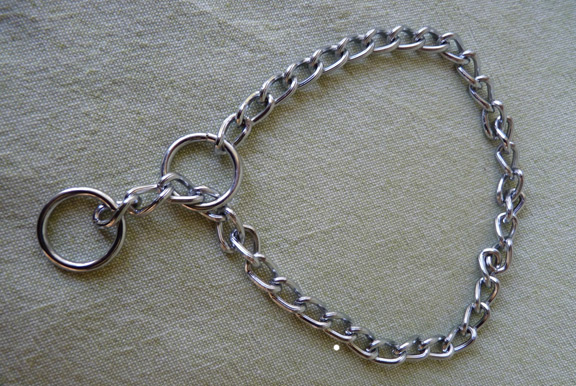
CHOKE CHAIN - A chain with looped ends designed to tighten around a dog's neck when it is pulled in order to cut off air supply and choke the animal. This collar has caused severe tracheal injury, nerve damage, whiplash, unconsciousness and even death. Can you imagine repeatedly being choked just for behaving normally?
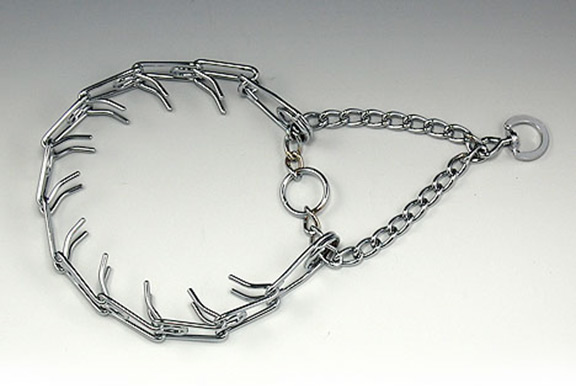
PRONG COLLAR - A prong collar has a double row of steel teeth that dig into a dog's neck. As the chain tightens the teeth pinch the skin hence the slang name 'pinch collar'. When pulled on roughly the prongs can penetrate the skin causing infection, sores, pain and suffering. Included with the physical pain is its constant companion, emotional pain. Manufacturers now make an outside cover to disguise the prongs below.
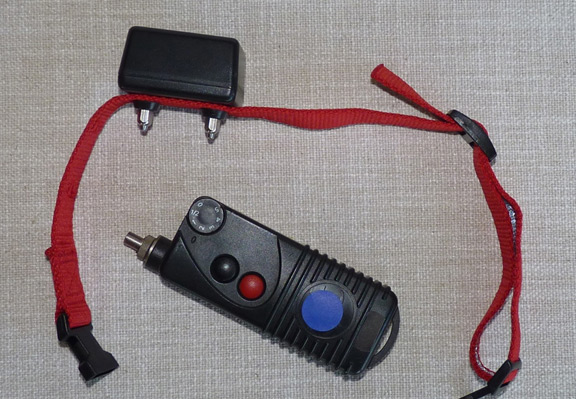
SHOCK COLLAR - A shock collar sends an electrical current of varying intensities and duration through two pointed contacts into an animal's neck often causing pain, anxiety and fear. Despite the denials of manufacturers, we now know these collars can cause burns, sores and serious infections. Malfunctioning collars can deliver a stronger and longer current than intended, or in the case of anti-bark collars, be set off by ambient noise. Only the wearer will know this is happening. Until the burns and sores are visible the owner will likely be unaware of the dog's suffering. In addition to the potential physical damage, scientific studies conclude the impact on an animal’s emotional state can be even more harmful and longer lasting.
For deaf dogs click here.
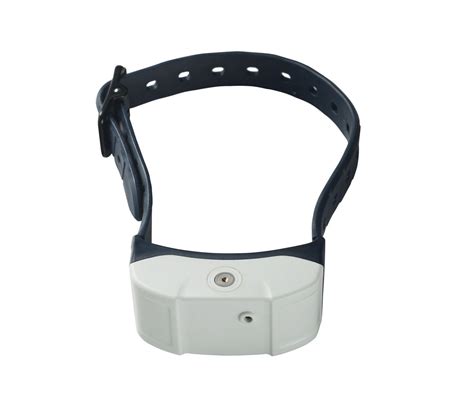
Anti-Bark Citronella Spray Collars - This is a collar that emits a citronella oil spray aimed at the dog’s nose, when he barks. The smell is obnoxious to dogs. As with anti-bark shock collars, spray collars can also be activated by ambient noises, including jingle noises from the dog’s own tags. Badly designed or ill-fitted collars can inadvertently spray dogs in the eyes. They can leak fluid onto the dog’s fur leaving an unceasing smell the dog is forced to endure. Spray collars can cause skin irritation, infection, ulcers and necrosis. Repeated sprays can irritate, sting and burn the lining of the nasal passages and cause respiratory issues. Spraying a dog in the face is an ineffective way to address the underlying reason the dog is barking. Any product that causes an animal to be uncomfortable, stressed or in pain is a recipe for further behavioural problems, including aggression.
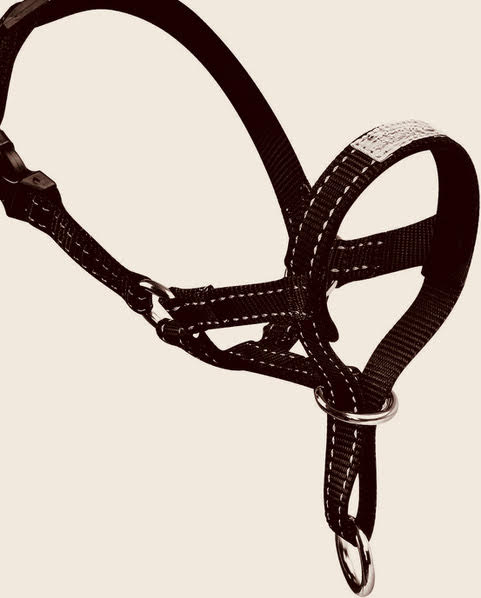
HEAD HALTERS - a combination of straps and loops fitted onto the dog’s snout to control the dog through pressure on the neck and face. The word ‘gentle’ is used in their promotion which serves to mislead dog owners into believing halters are completely comfortable and safe. The head, nose and neck of a dog are fragile parts of the anatomy and even light jerks or yanks can cause a multitude of invisible injuries that can effect the dog’s entire physical structure and emotional well-being. Ill-fitting halters can rub and cause visible face sores. Hence, dogs often become closed down to even trying to sniff and show interest in their surroundings. Such behaviour is regrettably interpreted by pet owners as ‘well behaved’.
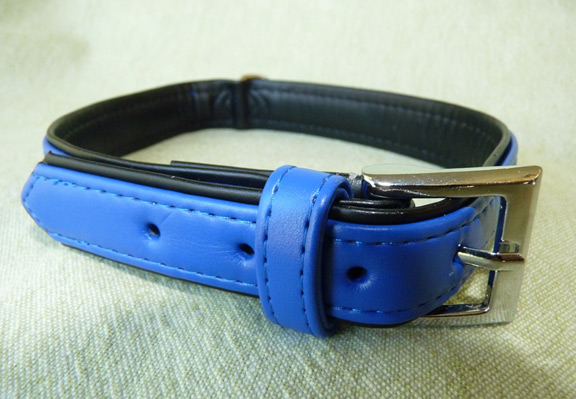
REGULAR FLAT COLLAR - a handy all purpose collar designed to attach tags & leashes. A flat collar and leash can help to keep your dog under control and safe when needed. Although the collar is generally comfortable if fitted properly, it can also harm an animal when it is too tight, yanked on or when a dog pulls hard. It only takes a few seconds of surging and lunging to potentially damage glands, trachea, larynx, tissue and nerves. Only attach a leash to a flat collar once a dog has been properly leash trained using a harness. A flat collar is best used as a fashion accessory and to hang ID tags. Always remove collars of any kind when pets are playing, home alone or crated.

HARNESS – an arrangement of straps that when attached to a leash is designed to restrain and control a dog comfortably without causing any undue discomfort, pain or damage. A proper fitting is critical to ensure the straps don't accidently rub and irritate. Numerous styles and types are available with rings to attach a leash to the front of the chest, on the back or both.
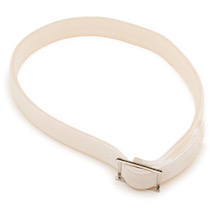
FLEA & TICK COLLARS – chemically infused collars designed to repel and kill fleas or ticks. They look harmless enough but the combination of toxic pesticides used in many of these collars are linked to reactions, injuries, illnesses and even death. Simply ask yourself, would you put a collar saturated with a combination of toxic chemicals around your own neck or your child's neck and leave it on for months seeping toxins into your skin and body? We play, pet, cuddle and hug our animals. Therefore the potential harm from these collars can hurt us too.
A Pesticide-Laced Flea Collar Has Been Linked to Almost 1,700 Pet Deaths. Why Hasn’t the EPA Issued a Warning? Johnathan Hettinger, InTheseTimes, March 2021 https://inthesetimes.com/article/flea-collar-pet-death-epa-pesticide-regulation
Poison on Pets II: Toxic Chemicals in Flea and Tick Collars, Miriam Rotkin-Ellman, NRDC, April 2009 https://inthesetimes.com/article/flea-collar-pet-death-epa-pesticide-regulation
HOW TO CHOOSE A DOG TRAINER LIKE YOUR DOG’S LIFE DEPENDS ON IT
As pet guardians we’ve heard too many horror stories to take choosing a trainer lightly. Those who think all trainers are created equal are setting themselves up for disappointment. Our hope is to awaken other pet guardians, particularly first timers, to some of the red flags that show a trainer may be incompetent and compassionately challenged. Article Here
FIND DIRECTORIES FOR HUMANE PAIN-FREE TRAINERS: CLICK HERE

DOGMATICS DOG TRAINING

"BACK PROBLEMS IN DOGS"
By Anders Hallgren, psychologist, author & researcher
A study that showed that it is as usual that dogs have problems related to the spinal, as we humans. In a normal population of 400 dogs there were 63% that had some sort of defect as defined by the chiropractors that were cooperating to do this piece of research. In many cases there were problematic behavior correlated to the back defect. One of the most alarming findings were that as many as 91% of the dogs that had been pulled hard on the leash, or themselves pulled hard, had defects in the neck!
Pulling and jerking on leash as well as tethering dogs may increase the risk of a spinal injury. A dog can easily forget the boundaries of the chain or rope, accelerate, and suddenly come to a halt, with all the stopping power concentrated around the dog's neck.
The results of this study have been spread worldwide and have made dog clubs change training methods and not use hard pulls on the leash any longer. Many dog owners now shift to use a harness instead of a collar (especially choke chain) to avoid hurting the neck of their dogs.
"EFFECTS OF THE APPLICATION OF NECK PRESSURE BY A COLLAR OR HARNESS ON INTRAOCULAR PRESSURE IN DOGS."
Pauli AM, Bentley E, Diehl KA, Miller PE.
Department of Surgical Sciences, School of Veterinary Medicine, University of Wisconsin-Madison, Madison, Wisconsin 53706, USA.
Abstract
The effect on intraocular pressure (IOP) from dogs pulling against a collar or a harness was evaluated in 51 eyes of 26 dogs. The force each dog generated while pulling against a collar or a harness was measured. Intraocular pressure measurements were obtained during application of corresponding pressures via collars or harnesses. Intraocular pressure increased significantly from baseline when pressure was applied via a collar but not via a harness. Based on the results of the study, dogs with weak or thin corneas, glaucoma, or conditions for which an increase in IOP could be harmful should wear a harness instead of a collar, especially during exercise or activity.
Can Shock-collars Burn?
By Jan Casey, MS, Dip CBST
First published in Barks from The Guild, the official publication of The Pet Professional Guild
Excerpt….Would I be willing to bet $10,000 that a shock collar is incapable of causing a burn? Not a chance. The greater question for me is why would anyone care whether the extensive damage on a dog's throat is a burn or pressure necrosis or edema or contact dermatitis? The fact remains that, had the dog not been wearing a shock collar, the painful injury would not be there…. Full Article Here
CHOKE PRONG AND SHOCK COLLARS CAN IRREVERSIBLY DAMAGE YOUR DOG
Dr. Peter Dobias, DVM

Before you start reading the following lines, I invite you to do a little test. Open your hands with your thumbs touching each other. Place the thumbs at the base of the throat and with the fingers pointing back and surrounding the neck.
Now, take a deep breath, squeeze and pull back with all your force keeping your thumbs connected.
This is how many dogs feel when they are on the leash and they are pulling.
If you are still keen to continue with this experiment, put a choke chain around your neck, attach it to a leash and ask a friend to pull and jerk on it periodically. Welcome to the dog world!
Read further how your dog's health is impacted HERE.
WHAT WORLD RENOWNED EXPERTS SAY ABOUT CHOKE, PRONG & SHOCK COLLARS
KAREN L. OVERALL
Karen L. Overall is a Diplomate of the American College of Veterinary Behavior (ACVB) and is certified by the Animal Behavior Society (ABS) as an Applied Animal Behaviorist.
World renowned animal expert Karen Overall has spoken out over many years of the ineffectiveness and ill that results when electric shock is used as a training tool on dogs.
"As a specialist in veterinary behavioral medicine I have been advocating for banning the use of shock collars of any kind for years. There are now ample published data in the peer-reviewed literature that show that shock harms dogs and adversely affects their behavior and welfare. Many people who resort to shock are afraid that without it their pet will die because of their behaviors. The companies who sell shock collars prey on these fears. Most people do not realize that the use of shock interferes with and suppresses normal canine behaviors, in general, not just behaviors that people find problematic. In fact, shock may render the behaviors of concern worse. In my patient population, dogs whom clients have shocked are over-represented in those euthanized because of the adverse effects shock has had on their behaviors. Dogs can recover from shock with appropriate care, and anyone considering shock should first seek the help of a qualified specialist in veterinary behavioral medicine. Specialists should be the source for competent, data-based information for any behavioral issues about which clients are concerned. I have studied the information provided by the companies manufacturing and selling most of the world's shock collars and it is my opinion that, without doubt, the information provided about behavior is incorrect and/or inadequate to address the behavioral concerns of dogs and may lead to abuse. The time to advocate for safe, effective, humane behavioral care for all animals has come, and shock has no role in such care".
Karen L. Overall, MA, VMD, PhD, Diplomate American College of Veterinary Behaviorists, ABS Certified Applied Animal Behaviorist
JOINT STATEMENT ON ELECTRONIC TRAINING DEVICES & PINCH COLLARS
RSPCA, APBC, Blue Cross, Dog Trust, Wood Green Animal Charity, Battersea Dogs & Cats Home, ABTC, The Mayhew Animal Home, The Kennel Club
"We, the organisations above, are opposed to the use of electronic training devices (ETDs) and pinch collars (also known as prong collars) believing they are unacceptable and unnecessary as a means of training and controlling dogs. We are calling for the sale and use of these devices to be prohibited…." Full statement here
CANADIAN VETERINARY MEDICAL ASSOCIATION
CVMA Mission Statement - "The Canadian Veterinary Medical Association (CVMA) is the national voice for the veterinary profession dedicated to serving and representing the veterinarians of Canada."
Position
"The Canadian Veterinary Medical Association (CVMA) supports the use of humane training methods that are built on current scientific knowledge of learning theory. Methods using positive reinforcement are highly favoured. Methods causing fear, distress, pain or anxiety are unacceptable"….
For more information on the impact of dog equipment and training please visit the following links:
Policies of World Renowned Animal Experts
What's Wrong With Using 'Dominance' to Explain the Behaviour of Dogs?
Why Prong Collars Hurt - Eileen Anderson
International Positive Dog Training Association
Scientific Studies on collars and training methods
Study shows collar stress can heighten glaucoma risk - Jessica Tremayne DVM 360
Emily Larlham Dogmatics Leash Walking based on Science and Rules of Ethics
Information on Other Important Dog Welfare Issues in the links below:
Tail Docking
Tail Docking and Ear Cropping Dogs: Public Awareness and Perceptions
Katelyn E. Mills, Jesse Robbins, Marina A. G. von Keyserlingk, Plos One 2016
Crating
The Crating Craze: Impact on Well-Being
Devocalization
Humane Society Veterinary Medical Association Devocalization Fact Sheet - HSVMA
Dog Boarding
Before You Board Read This - BSCC
Contact Us
Always investigate thoroughly any product or service you employ for your pets.
If you witness animal abuse, please do not delay in reporting the incident to the police or an animal organization in your area. If by reporting the abuse you feel your safety is at risk tell the authorities you wish to remain anonymous.
Thank you
